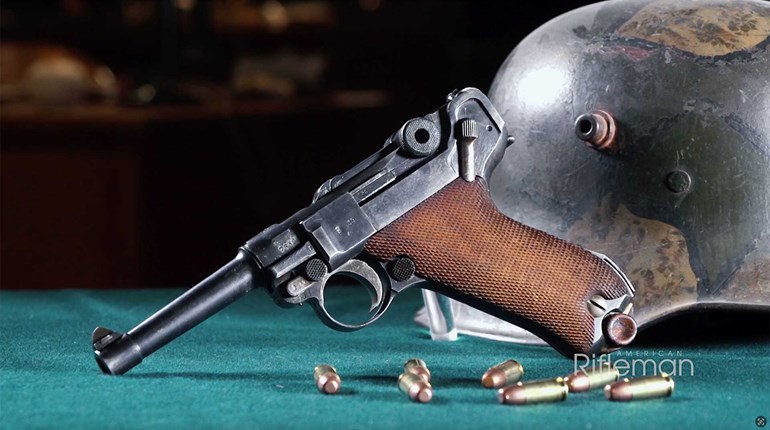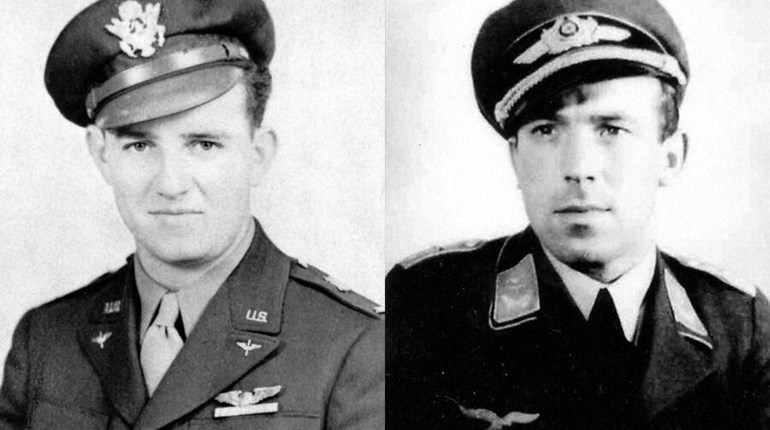
Another Veterans Day is lately past, but it always brings on—at least for us—a longer period of reflection. A single day seems wholly inadequate to consider the sacrifices of America’s protectors and their families. Time’s march and increasingly vulgar, modern passions are no help, but to stem such corrosions where and how we can seems worthwhile.
1998’s “Saving Private Ryan” familiarized movie fans with President Abraham Lincoln’s slightly controversial Bixby Letter. Whatever the truth of the surrounding circumstances, the letter itself was a legitimate artifact. Actor Harve Presnell (as Army Chief-of-Staff General George Marshall) reads the poignant, Civil War-era missive with masterful gravity (here, at ~5:50) prior to ordering an urgent search for Private Ryan, the only survivor of four brothers in the Allied assault on Hitler’s “Fortress Europe” in June 1944.
Private Ryan was a not a real person, but the scale of sacrifice portrayed in the film was dreadfully real for two American families. Seventy-five years ago this week, Thomas and Alleta Sullivan of Waterloo, Iowa, would lose five of their six children in the service of their nation.

Eldest brothers George and Frank were experienced sailors when World War II broke out in December 1941 (here, here and here). Both had been discharged from U.S. Navy service in May of that year, but they and remaining brothers (Joseph, Madison (“Matt”) and Albert) presented Navy recruiters with an unusual request in the aftermath of Pearl Harbor: If they could serve together, all five would enlist, or re-enlist. All were accepted for service in early January 1943.
At the time, Navy policy would normally have separated siblings, though enforcement was not strict. Almost unbelievably, they were one of 30 sets of at least two siblings on board the same vessel (the Rogers brothers, for instance). In the end, all five were assigned aboard the light, fast cruiser USS Juneau when she escorted reinforcements to Guadalcanal from New Caledonia. Task Force 67 arrived at the besieged inland on the morning of Nov. 12.
Juneau’s task was to protect cargo vessels—laden both with reinforcements and badly needed supplies—and until midafternoon, all went well. Thirty Imperial Japanese Navy (IJN) aircraft attacked the operations shortly after 2 p.m., but Juneau acquitted herself admirably in downing six enemy aircraft. Other escorts, including the USS San Francisco, and the Cactus Air Force accounted for all but one of the remaining attackers.
The IJN had also dispatched a large surface flotilla towards Guadalcanal. Two battleships, a light cruiser and nine destroyers were headed for the “landing support group,” of which Juneau was part. Rear Admiral (and posthumous Medal of Honor recipient for the action) Daniel Callaghan had the smaller force, but nevertheless offered battle.
It was, quite simply, a dreadful night.
Five ships were heavily damaged, and the USS Atlanta—a sister ship of Juneau and flagship of posthumous Medal of Honor recipient Rear Admiral Norman Scott and Pearl Harbor recipient Captain Cassin Young—was sunk. Much of the damage was likely inflicted by friendly fire from San Francisco in a nighttime battle that was fought at essentially point-blank range by naval gunnery standards.
Juneau and the Sullivans fared slightly better. The port side was struck by a torpedo from a Japanese destroyer, and Juneau was forced to retire from the action. The next day found her steaming to Espiritu Santo for repair, but under the power of only one of her two screws.
Cruisers USS Helena and San Francisco limped along with Juneau until they were attacked by Japanese submarine I26. Two torpedoes launched at San Francisco missed her, but one struck Juneau in almost the identical location of her battle damage from the night before. The 6,700 ton, 541-foot-long warship was broken literally in two by the resulting explosion, and went down in only 20 seconds.
The dreadful exigencies of war made San Francisco and Helena hasten onward; not only did they fear continued attack by the submarine, but Captain Gilbert C. Hoover (of the Helena) did not believe anyone aboard could have survived Juneau’s sinking. He signaled a nearby B-17 bomber to notify Allied headquarters and send search aircraft and ships as soon as possible.
The grim reality was somewhat different: Nearly 100 sailors survived the Juneau blast, but no search craft arrived for eight days. The B-17 had been operating under radio silence, and the paper version of their report was unaccountably delayed. When a PBY “Catalina” finally returned to the site of Juneau’s watery grave, only 10 survivors remained (687 lost).
The Sullivans’ tale was an unmitigated disaster: Frank, Joseph and Matt had been killed in the explosion with most of their shipmates, but Al had survived until the next day, only to drown. George, the oldest, survived either four or five days, eventually succumbing to hypernatremia. Other survivors argued he was “insane with grief” and simply slipped over the side of his lifeboat.
The Navy honored the brothers almost immediately. Less than six months later, Mrs. Sullivan sponsored DD-537, a Fletcher-class destroyer. President Franklin Roosevelt intervened to name the ship in the plural to honor all five brothers; it also marked the first time a U.S. Navy vessel was named for more than one person. The Sullivans went on to win nine battle stars in World War II actions, and a further two in Korea. The loss of the Sullivan sons also led to an official, U.S. military-wide “Sole Survivor” policy (1948). Both a movie (1944) and TV series (beginning in 1976) told aspects of the Sullivan story.
A second The Sullivans continues to serve in the U.S. Navy to this day, still bearing the brothers’ oft-spoken motto, “We stick together.” Albert’s granddaughter, Kelly Ann Sullivan Loughren, sponsored the Arleigh Burke-class destroyer’s launch in 1995, much as her grandmother had done 52 years earlier.

In one of those odd historical synchronicities, the first The Sullivans (DD-537) brings us full circle with the sacrifices of that second family, as well as with “Saving Private Ryan.” The original Sullivans namesake is now a floating museum at the Buffalo and Erie County Naval and Military Park. Just 12 miles away is Tonawanda, N.Y., and in the early 1940s it was home to the six Niland siblings, four boys and two girls.
Like the Sullivans, the Niland brothers all served; unlike the Sullivans, they chose the U.S. Army. Edward was the oldest, and his B-25 Mitchell medium bomber (of “30 Seconds Over Tokyo”/Doolittle Raid fame)—recollect it was the Army Air Corps in those days—was shot down in Burma in May 1944. Brothers Preston, Robert (“Bob”) and Fritz all went ashore on D-Day (here), Preston landing at Utah Beach while Bob and Fritz parachuted in with the 82nd and 101st Airborne, respectively (here).
Only the youngest brother—Fritz—survived the Normandy landings, and his story was the loose basis of the Private Ryan character. Securing his safety did not require a harrowing, costly search through the shifting Allied/Axis lines in the early days after the invasion. When the Army recognized that Fritz’s brother Bob had already been lost, they shipped him back to England, and eventually to New York. He served out his enlistment as a military policeman, and earned a Bronze Star for his service.
Edward’s tale had to await the end of the war to be fully told. He had actually escaped his crippled aircraft, parachuted safely and evaded the Japanese in the Burmese jungle before finally being captured. Though he had to endure a year of comparatively brutal treatment in Japanese hands, he was liberated in May 1945. He returned to Tonawanda, and lived there until his death in 1984.
We’re taking more than Veterans Day to remember how honorably, dearly and preciously bought our liberties are, and hope you will do the same.
Frank Winn has been studying arms and their relationship to tyranny, meaningful liberty and personal security all his adult life. He has been a firearms safety/shooting instructor for more than 20 years, and earned state, regional and national titles in several competitive disciplines.
































